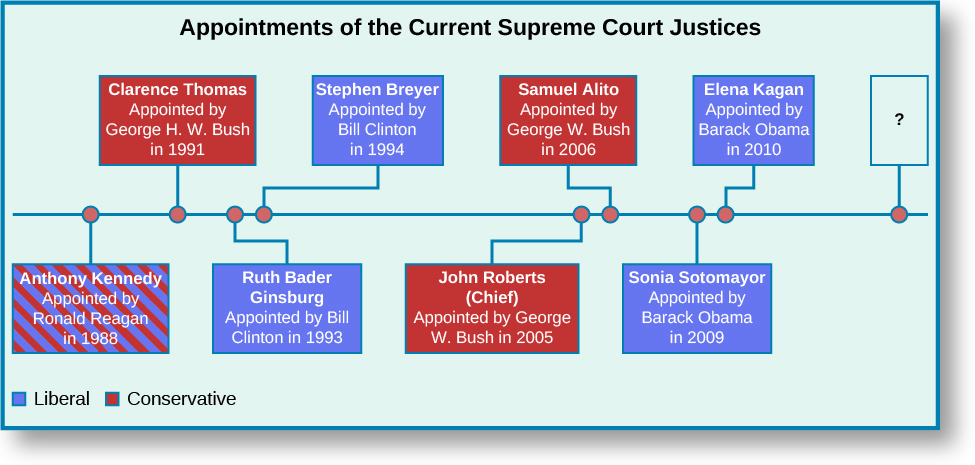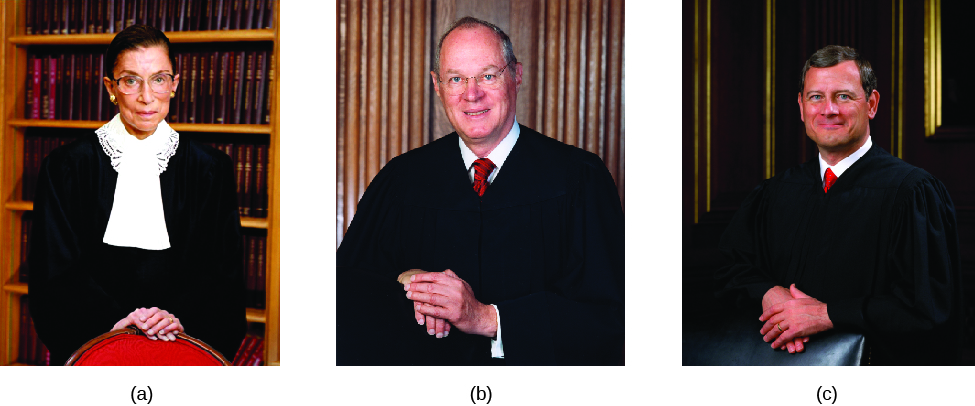| << Chapter < Page | Chapter >> Page > |
By the end of this section, you will be able to:
The Supreme Court of the United States, sometimes abbreviated SCOTUS, is a one-of-a-kind institution. While a look at the Supreme Court typically focuses on the nine justices themselves, they represent only the top layer of an entire branch of government that includes many administrators, lawyers, and assistants who contribute to and help run the overall judicial system. The Court has its own set of rules for choosing cases, and it follows a unique set of procedures for hearing them. Its decisions not only affect the outcome of the individual case before the justices, but they also create lasting impacts on legal and constitutional interpretation for the future.
The original court in 1789 had six justices, but Congress set the number at nine in 1869, and it has remained there ever since. There is one chief justice , who is the lead or highest-ranking judge on the Court, and eight associate justice s . All nine serve lifetime terms, after successful nomination by the president and confirmation by the Senate.
The current court is fairly diverse in terms of gender, religion (Christians and Jews), ethnicity, and ideology, as well as length of tenure. Some justices have served for three decades, whereas others were only recently appointed by President Obama. [link] lists the names of the eight justices serving on the Court as of November 2016, along with their year of appointment and the president who nominated them.

With the death of Associate Justice Antonin Scalia in February 2016, there remain three current justices who are considered part of the Court’s more conservative wing—Chief Justice Roberts and Associate Justices Thomas and Alito , while four are considered more liberal-leaning—Justices Ginsburg , Breyer, Sotomayor , and Kagan ( [link] ). Justice Kennedy has become known as the “swing” vote, particularly on decisions like the Court’s same-sex marriage rulings in 2015, because he sometimes takes a more liberal position and sometimes a more conservative one. Had the Democrats retained the presidency in 2016, the replacement for Scalia’s spot on the court could have swung many key votes in a moderate or liberal direction. However, with Republican Donald Trump winning the election and the Republicans retaining Senate control, it is likely that the replacement in 2017 will be more conservative.

While not formally connected with the public the way elected leaders are, the Supreme Court nonetheless offers visitors a great deal of information at its official website.
For unofficial summaries of recent Supreme Court cases or news about the Court, visit the Oyez website or SCOTUS blog.

Notification Switch
Would you like to follow the 'American government' conversation and receive update notifications?